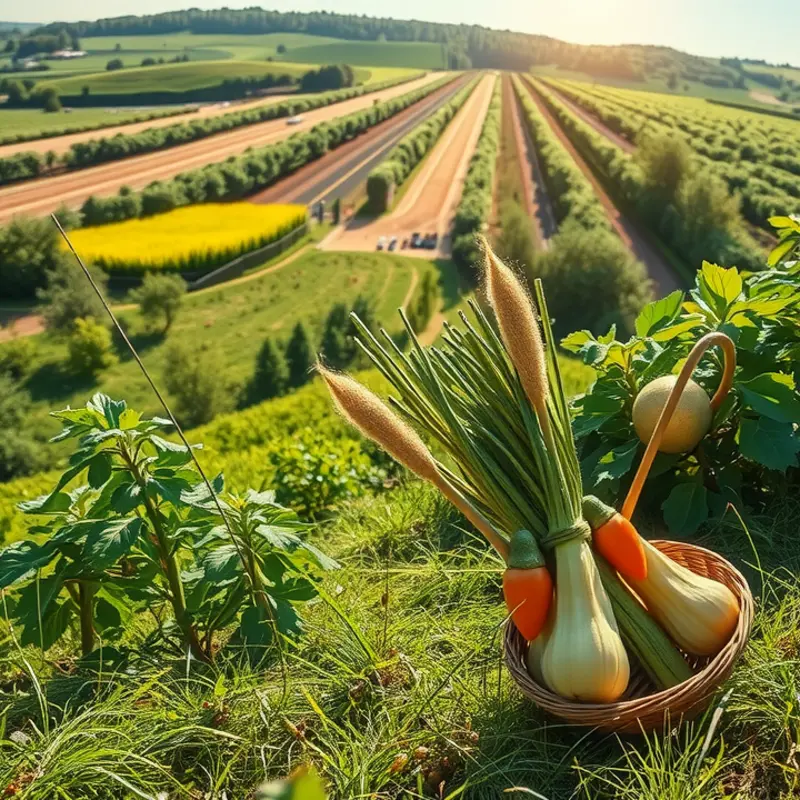Making environmentally conscious food choices is critical in our fight against climate change. By adopting climate-sensitive grocery shopping habits, you can significantly reduce your carbon footprint while enjoying delicious, healthy meals. This guide aims to empower you to make informed decisions about your grocery purchases, highlighting sustainable practices, seasonal produce, and ethical sourcing. Discover how your buying choices can lead to a healthier planet and inspire others to join the movement toward a sustainable food future.
Understanding the Ecological Impact of Food Choices

The journey of food from farm to table is complex, encompassing several key stages — production, packaging, and transportation. Each stage contributes to the carbon footprint of our food, affecting the environment in profound ways. By dissecting these processes, we can make more informed choices to reduce our ecological impact.
Food production is the cornerstone of its ecological footprint. Different farming practices bear varied environmental consequences. Conventional agriculture often relies heavily on synthetic fertilizers and pesticides, which demand significant fossil fuel inputs to produce and apply. These chemicals degrade soil health, reducing its natural ability to sequester carbon. In contrast, organic and regenerative farming practices focus on enhancing soil health and biodiversity. These practices often use crop rotation and cover crops, which help retain soil organic matter and improve carbon sequestration.
Livestock farming is another major contributor to greenhouse gas emissions. Ruminants, such as cattle and sheep, produce methane — a potent greenhouse gas — through digestion. Furthermore, land use for animal agriculture is extensive, often involving deforestation, which reduces the planet’s natural carbon sinks. Reducing meat consumption, particularly red meat, can significantly lower one’s carbon footprint and influence farming practices toward more sustainable methods.
Food packaging, often overlooked, plays a crucial role in the environmental impact of our groceries. Many food items are encased in layers of plastic, which not only require energy to produce but also contribute to pollution. Opting for products with minimal or biodegradable packaging helps decrease the demand for petroleum-based plastics and reduces plastic waste.
Transportation adds another layer of complexity to the food’s ecological footprint. The distance food travels from farm to fork impacts the total emissions. The concept of food miles highlights the environmental cost of transporting food long distances. While local sourcing and seasonal eating minimize these miles, it’s essential to consider the mode of transportation. Shipping by sea, although longer, is generally less carbon-intensive than air freight. Whenever possible, prioritize locally produced foods to support sustainable efforts within your community.
Packaging and transportation combine to influence a product’s overall environmental impact. For example, imported fresh produce might have a higher carbon footprint due to air freight. This can outweigh the lower emissions from production if the produce is not grown locally and efficiently.
To make savvy choices, consider not just where your food comes from, but how it is grown, transported, and packaged. Conscious food selection can mitigate environmental damage, foster sustainable agriculture, and encourage eco-friendly consumer habits. For more insights on maintaining an eco-smart kitchen, including storage tips, explore Eco-Smart Kitchen Storage. Shifting toward a greener plate requires mindfulness and dedication, but the benefits for our planet can be substantial.
Best Practices for Sustainable Grocery Shopping

Transitioning towards eco-friendly grocery shopping begins with the choice of produce. Choosing seasonal produce is crucial, as it reduces both the carbon footprint associated with transportation and the environmental costs of energy-intensive storage. Seasonal fruits and vegetables typically require less intensive inputs like artificial heating or lighting, making them a more sustainable choice. A quick visit to a local farmers market or a glance at the produce section can indicate what is in season.
Supporting local producers plays a significant role in sustainable practices. When you buy local, you cut down on the carbon dioxide emissions associated with long transportation routes. Additionally, purchasing local produce helps sustain small-scale farmers who often use environmentally considerate farming methods. These producers can be found at farmers markets or through community-supported agriculture (CSA) programs.
A key area where consumers can make a difference is reducing plastic waste. Most grocery stores are filled with plastic-wrapped products, from produce to grains. Opting for loose fruits and vegetables, bringing reusable produce bags, and selecting products housed in recyclable or biodegradable packaging can significantly lower your plastic footprint. Moreover, buying in bulk reduces packaging waste. When you fill reusable containers with bulk foods such as grains, nuts, or spices, you not only minimize packaging waste but also typically save money.
Supporting ethical brands is another rewarding aspect of sustainable grocery shopping. Many companies are taking steps to operate more sustainably. Look for brands that emphasize fair trade, use minimal and eco-friendly packaging, or are certified organic. Ethical brands often provide living wages to workers and apply environmentally friendly practices in their operations. This conscious support encourages others to adopt sustainable practices.
To further incorporate sustainability into everyday choices, consider planning meals that emphasize plant-based foods, as they generally have a lighter environmental impact compared to meat and dairy products. For more insights on plant-based eating, easy plant-based eating offers practical guidance.
These actionable strategies not only help reduce your personal carbon footprint, but they also promote a broader cultural shift towards environmental responsibility. By prioritizing seasonal, local, and less-processed products, reducing packaging, and supporting ethical brands, your grocery shopping can become a powerful tool in combating climate change.
Final words
Adopting climate-sensitive grocery shopping habits is a powerful step toward protecting our environment and promoting sustainability. By being mindful of your food choices, supporting local farmers, and prioritizing seasonal produce, you can significantly reduce your carbon footprint. Your actions not only impact the environment but also inspire others to follow suit. Remember, every small choice contributes to a larger impact. By becoming a conscious shopper, you engage in a movement towards healthier food systems and ecological balance. Commit to eco-friendly grocery shopping today, and you’ll be part of the solution.








